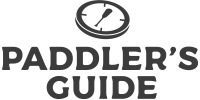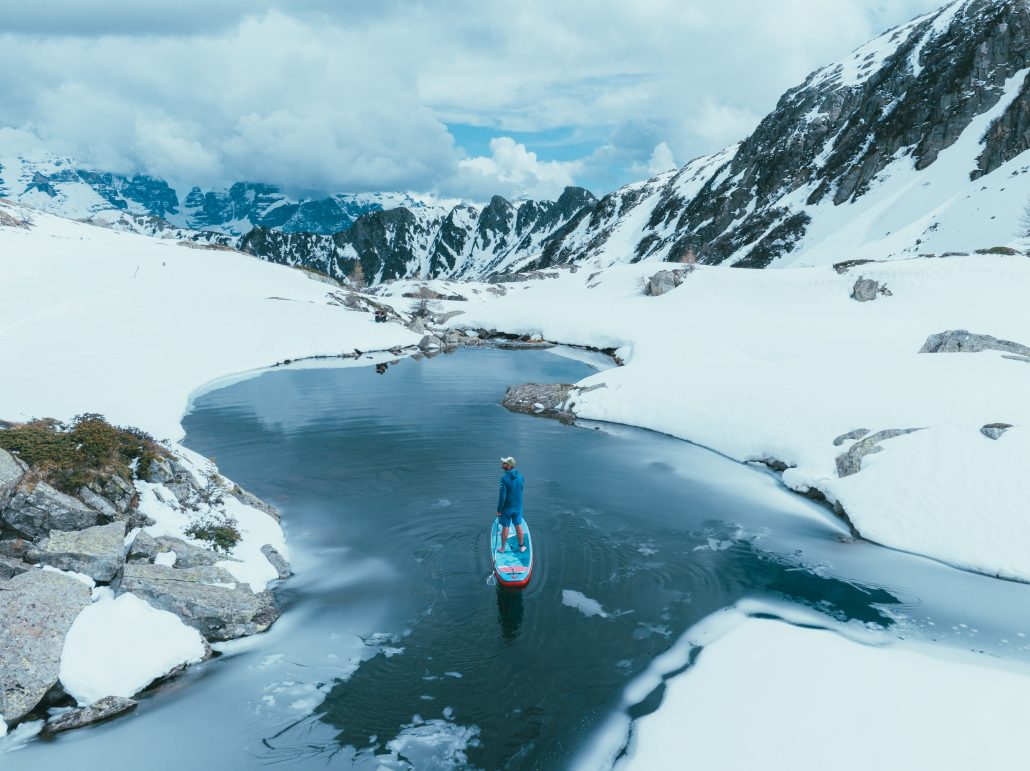Exploring the untouched alpine lakes of the Italian Alps, Wim Pyl and his team set out to stand-up paddleboard in some of the most remote and pristine waters on Earth. This journey wasn’t just about adventure; it was an effort to uncover the truth about these high-altitude lakes’ purity and their potential contamination by microplastics. Partnering with Sydney, an experienced plastic waste researcher from Protect Blue, they aimed to collect water samples and assess the environmental impact on these natural reservoirs. What challenges would they face, and what truths would they uncover about the state of our planet’s most isolated lakes?
Chapter 1: The Idea
Stand-up paddleboarding on the highest possible, hard to access, alpine lakes has been a recurring dream I’ve been unable to shake. No one has ever paddled on these lakes before. They should be the most untouched, pristine pools, But is that the reality? This venture is not just about experiencing the unknown but about understanding just how pure these lakes are. Have they been impacted by human activity in the same way as many of the other lakes, rivers and oceans I have paddled?
Are they free of plastic? Are they as pure as we imagine?
The plan was to sample the water we would paddle on. To make the most of the opportunity I needed to find a partner for the journey. Sydney was the perfect candidate. We didn’t know each other yet, but she is also a member of Protect Blue, a community of ocean ambassadors. She has lots of experience working with plastic waste, so that was a good start.
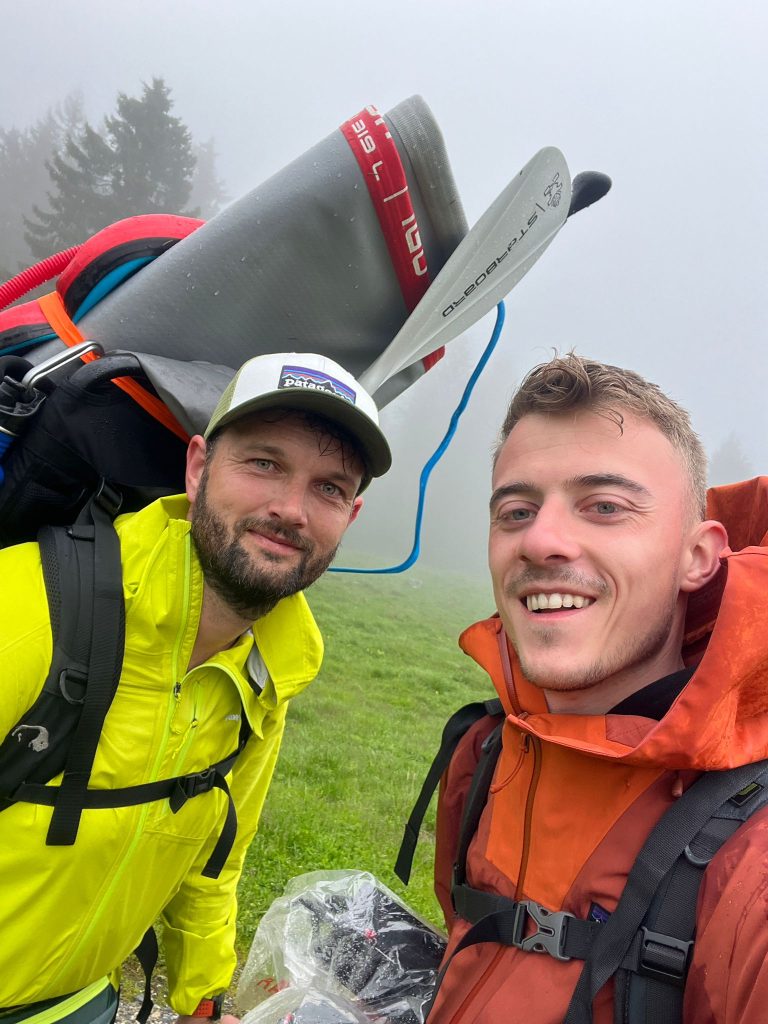
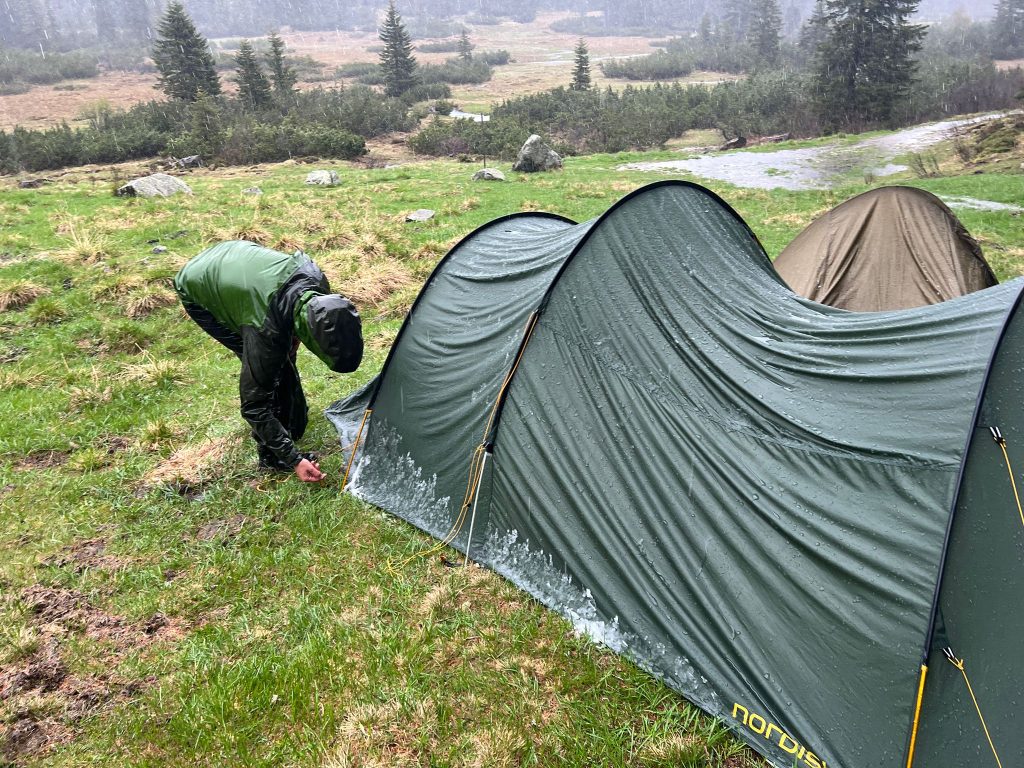
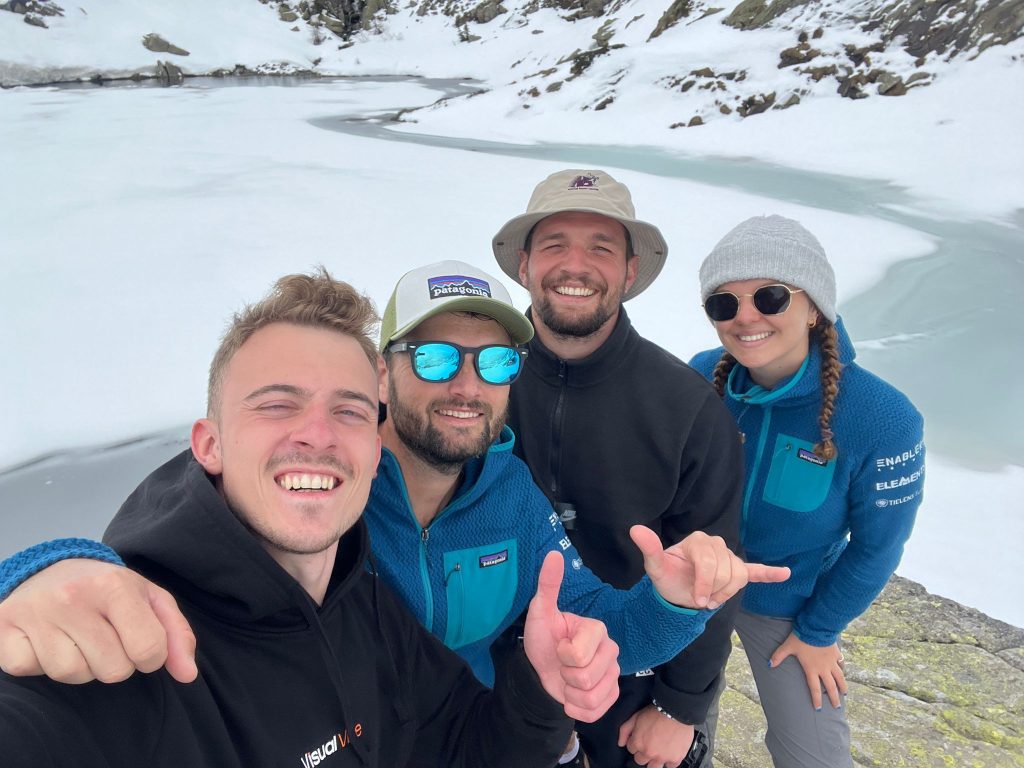
Chapter 2: Testing And Preparation
A trip like this requires a lot of equipment: two SUP boards, tents, clothing and sample materials is just the top of the list. How do you get all that gear up the mountains?
So began the research and testing phase… it did not go as smoothly as we had hoped. It turns out a duffel bag is not ideal for long distances. A SUP gets wet (and heavy) after being in the water. And where do you put glass so it doesn’t break? Yes, we used glass for our samples because plastic bottles cause immediate contamination. Clothing, tents, mats, and sleeping bags also need space. Normally when hiking, you want your luggage to be as light as possible. But with so many essentials for this trip, a lightweight backpack was looking unlikely. Managing the weight of all our gear was our biggest challenge to figure out, causing a lot of puzzling and struggling. Eventually, with with the help of a carrying rack, duffel bag, hip pouch, and some well positioned straps we had luggage that, while not light, was manageable.
For the sample research, I visited CMK, Bitelab University in Hasselt, Belgium who specialize in this kind of research. Although the combination of hiking, stand up paddling and collecting data was new for them too! During my visit I learnt how to deliver clean samples and we discussed at length how to keep the results as accurate as possible. I left the university with a cart full of boxes filled with glass bottles, filters, and more. How am I going to get all this up the mountains?!
Chapter 3: The Journey
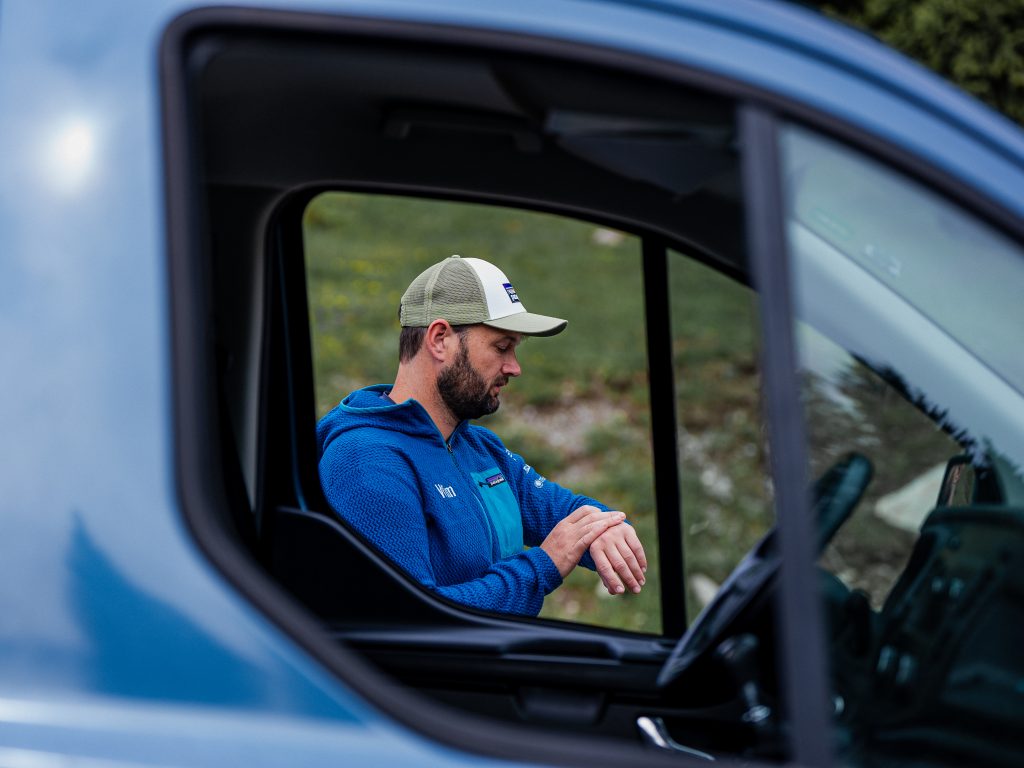
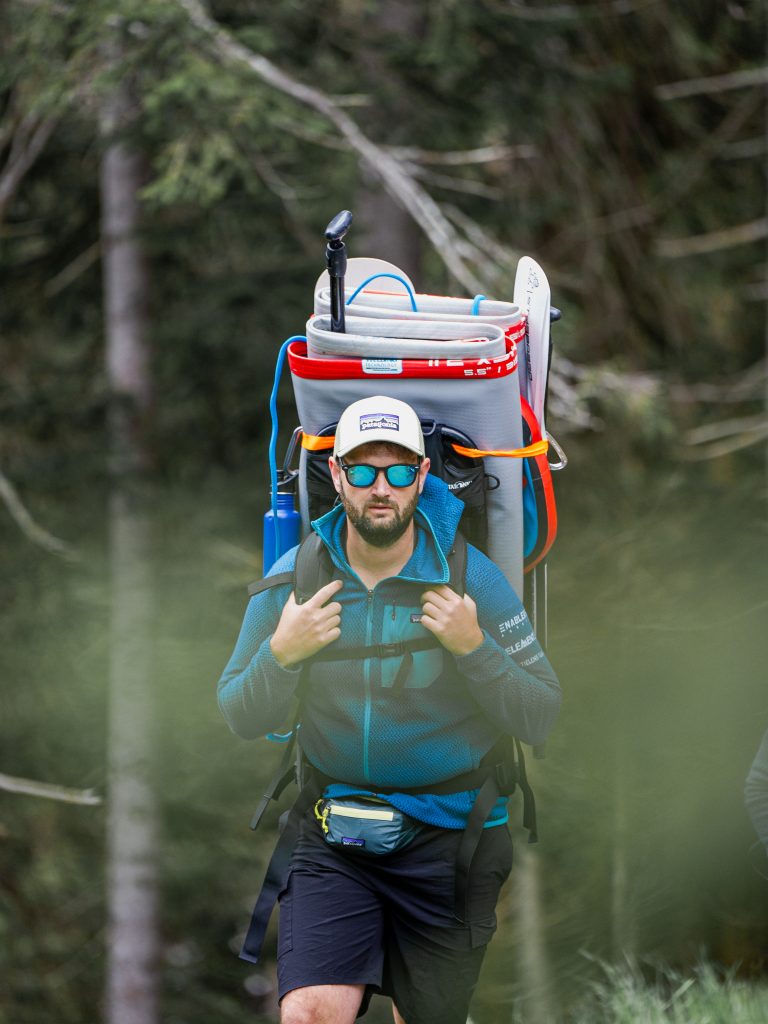
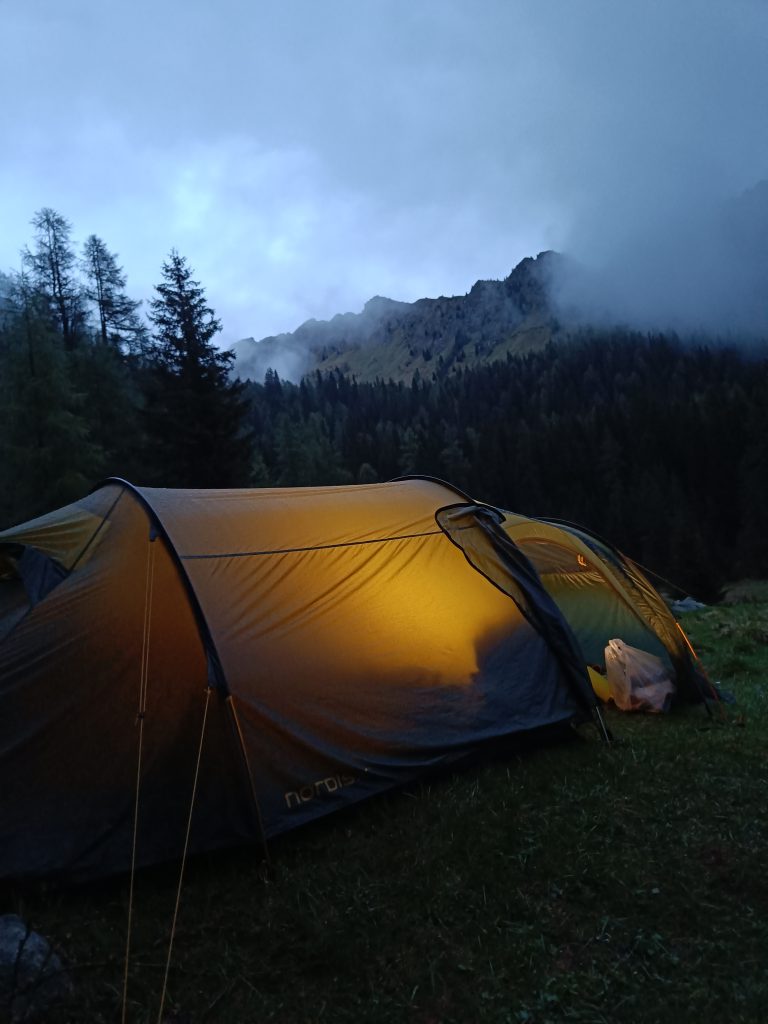
DAY 1: Local Preparation
We begin our journey in the Italian Alps. The dam lake, Lago di Place Moulin at 1900 meters, looks stunning. Snow on the slopes, several waterfalls, and crystal-clear blue water. An ideal setting to test all the equipment one last time, which we do while paddling. With some adjustments, we are completely ready for the coming week. We fill a few liter bottles with water from the lake, gathering our first samples.
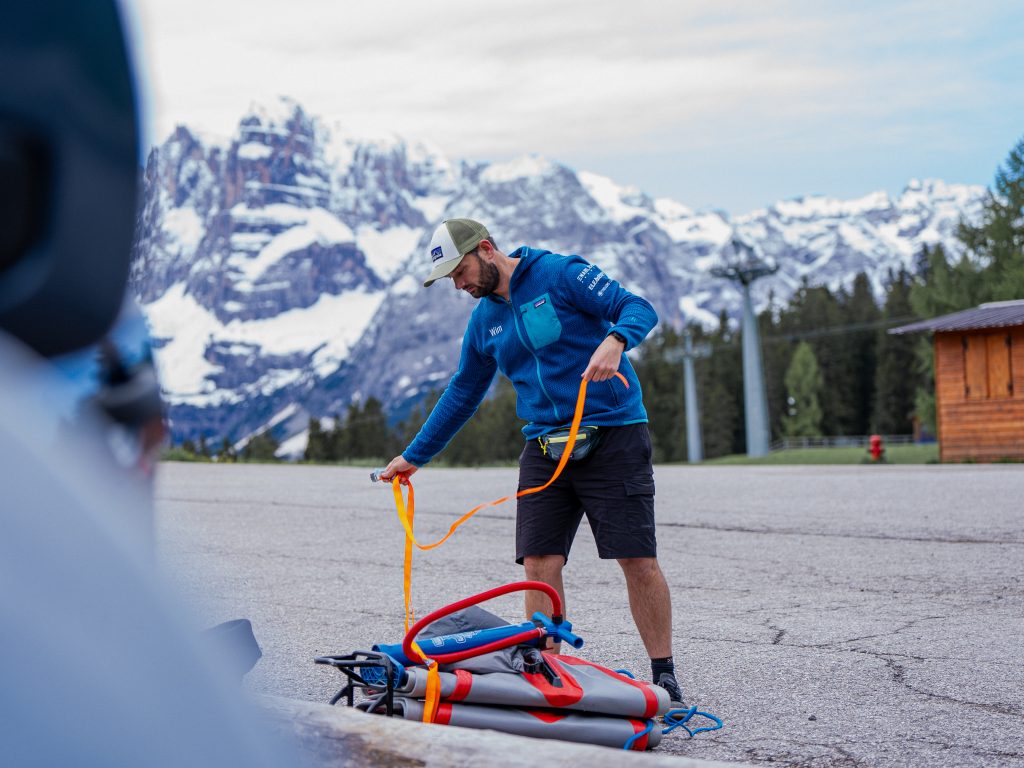
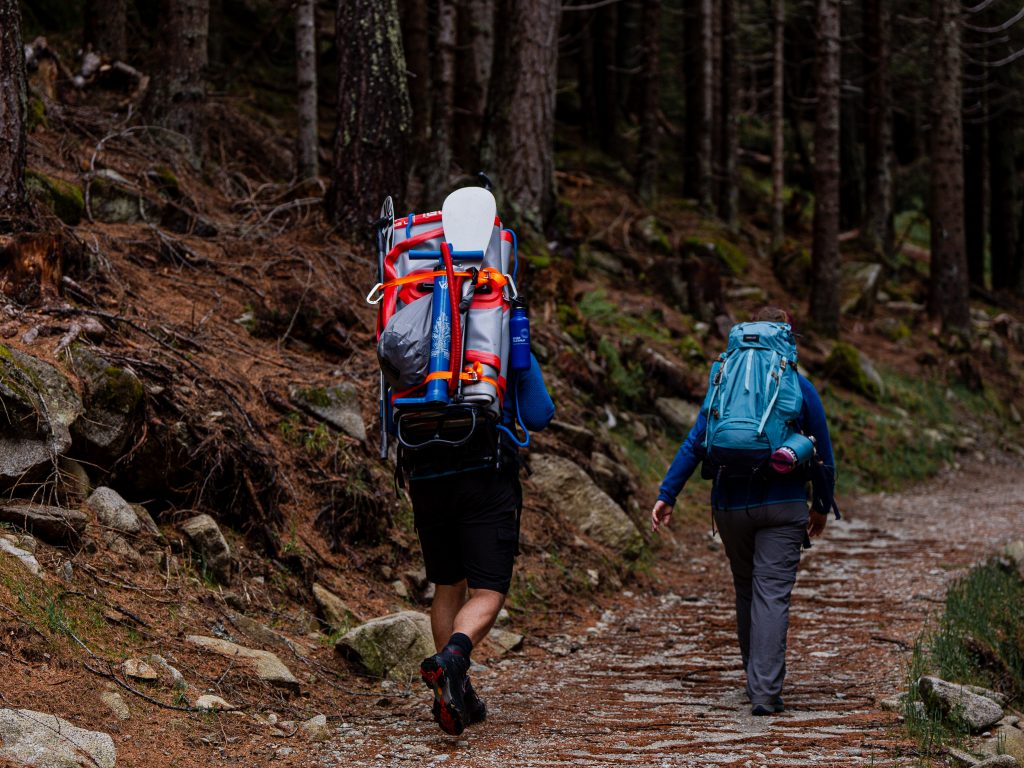
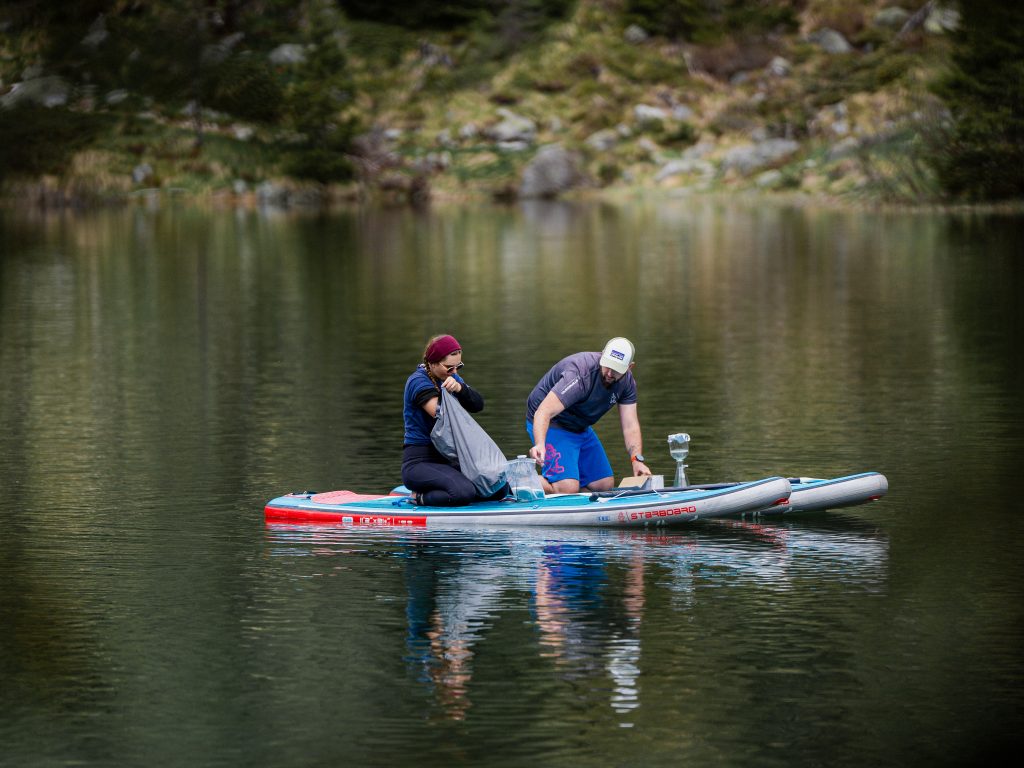
DAY 2: Day Trip to Our First Lake
The sun is shining, and the weather is beautiful. It snowed the previous week, but according to the locals, this route is doable. With a 500-meter elevation gain over 2.5 km, we have a challenging climb to start. After some climbing, we see the first patches of snow. Wow, will we be able to paddle between the snow? During this time of year, there is usually little snow. The higher we climb, the more snow we see on the paths and slopes. Occasionally, a leg sinks deeper into the snow. It becomes thick and checking for avalanche danger is necessary. Is the destination achievable, I wonder? Moreover, the lakes turn out to be frozen will we have climbed all this way for nothing? We decide to fill the glass bottles we carried up with snow, hoping they can still conduct some tests before descending back to the car.
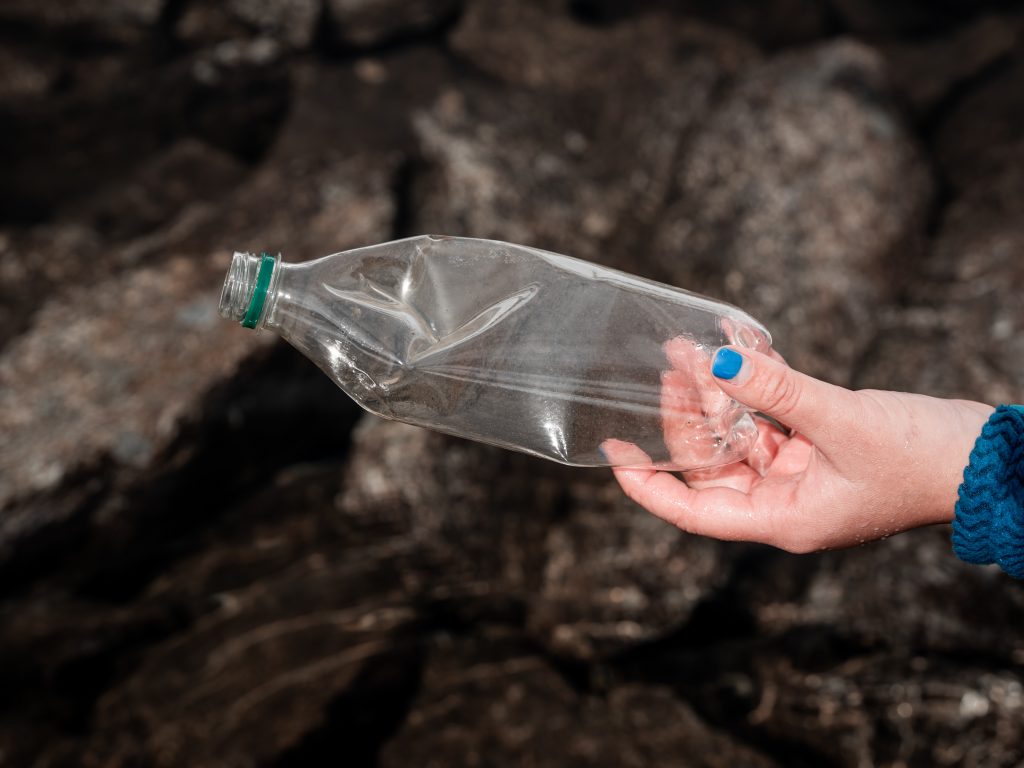
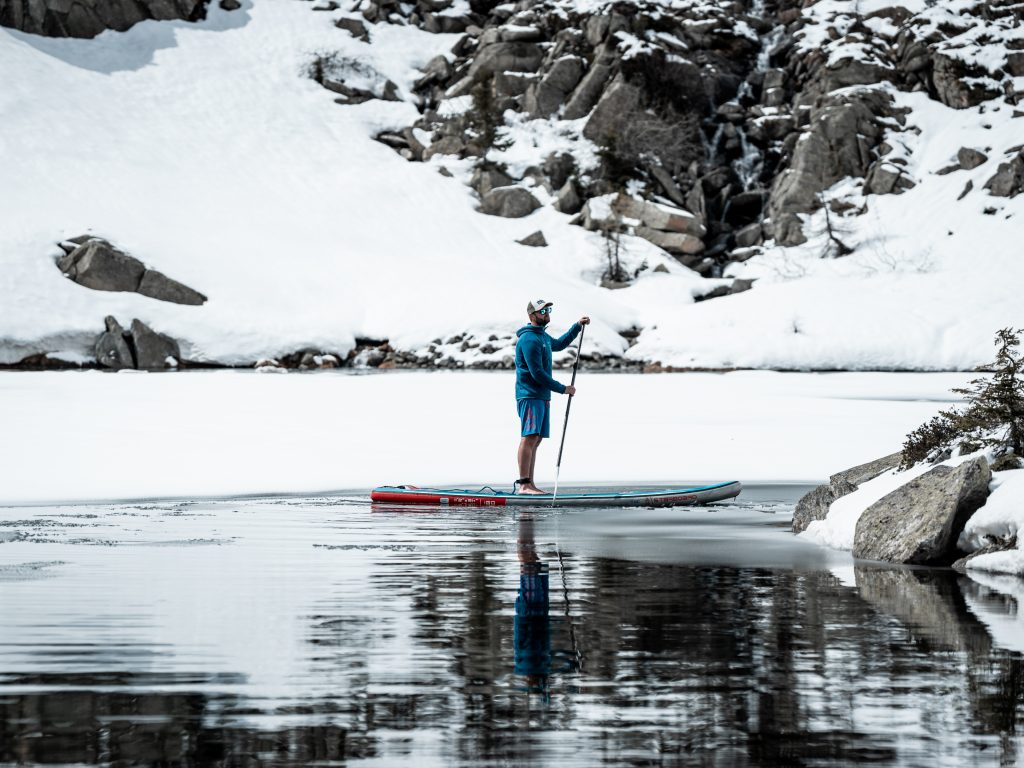

DAY 3: Climbing Up and Setting Up Camp
We wake up early and head towards Madonna di Campiglio, our starting point for a three-day trek. Packed with everything to last three days, we start our journey. It’s raining a bit, but since this part mostly goes through the forest, it doesn’t bother us much. We enjoy the forest scents and the fresh air. Before it gets dark, we find an ideal spot to set up our tents. It’s still raining, but the view makes up for a lot. We prepare some meals from packets before the down kicks in. By the way, those Trek’n Eat packets continue to amaze me.
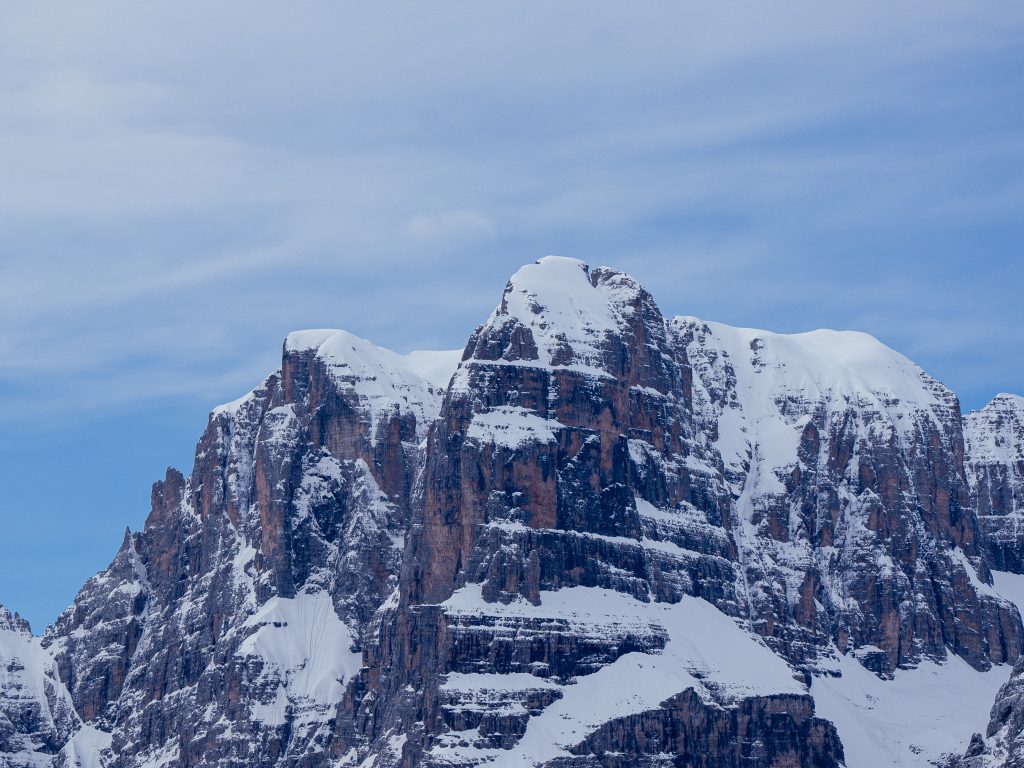
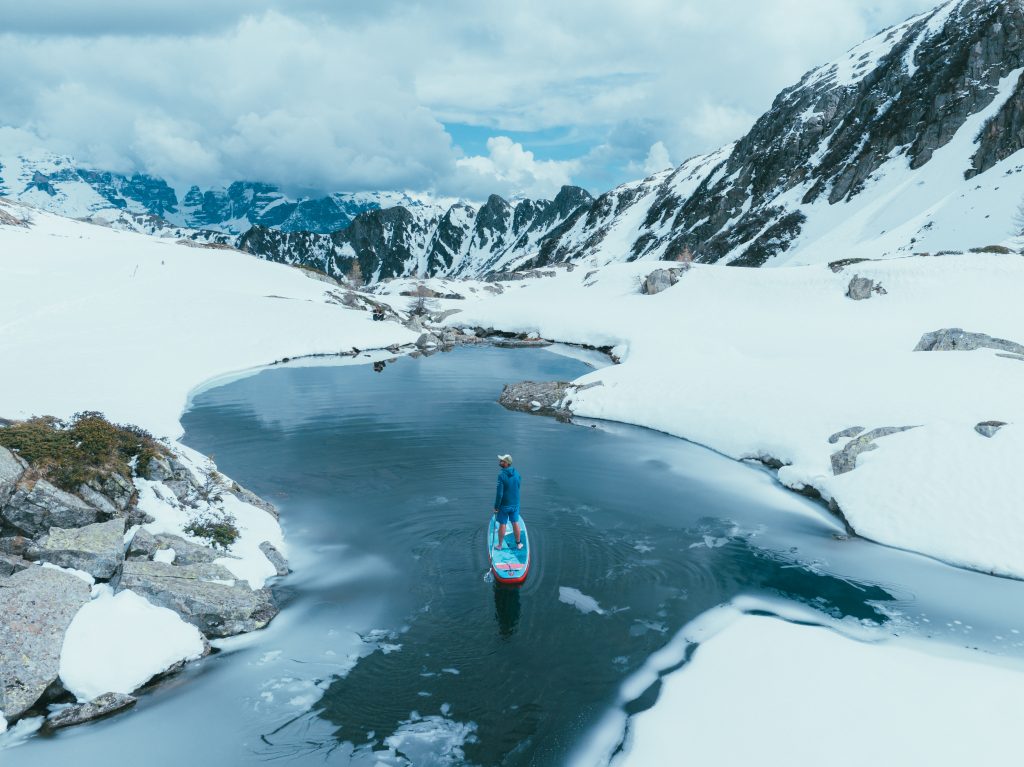

DAY 4: Descending Through Snow and Rain
I barely slept! The wind howled and the rain and snow battered the sides of the tent keeping me awake. I had left the SUPs and paddles outside. Getting wet obviously wouldn’t harm them. But it was so windy, at least it felt like that in the tent, that I doubted if the paddles wouldn’t be blown away. Should I risk it or go out and get soaked? I decided to stay in. It kept raining. We have to get up eventually. Our tents were full of ice.
We finally decided to pack the tents wet and skip breakfast. Within minutes, we were soaked as we continued our hike towards beautiful lakes. The higher we climbed, the wetter the paths became, and more ice covered the paths and large stones. Paths turned into streams, and everything became extremely slippery. The rain continued, and the forecast was not in our favor. Safety first, so we decided to descend.
We warmed up at Restaurant Malga Ritort, which despite being closed, saw us arrive all wet and cold and kindly let us inside to dry off and warm up. After a delicious coffee and cake for breakfast, we continued down towards the car. It felt like a retreat. Since we were down early, we could also visit the garage. One of the car’s brakes had been making a scraping noise for two days. A good decision, it turned out, as the local mechanic advised us not to drive the car any further. The spare part would arrive on Monday. That meant three days of waiting, and we didn’t have that time!
After some searching and calling, we found a garage that could fix the brake just two hours before closing. A brake pad was sticking. What a relief. I was happy but only briefly. We spent another night in a hotel instead of by a beautiful lake where we had just paddled and collected samples. My goal felt distant and unrealistic.
DAY 5: Reaching Lago di Nambino

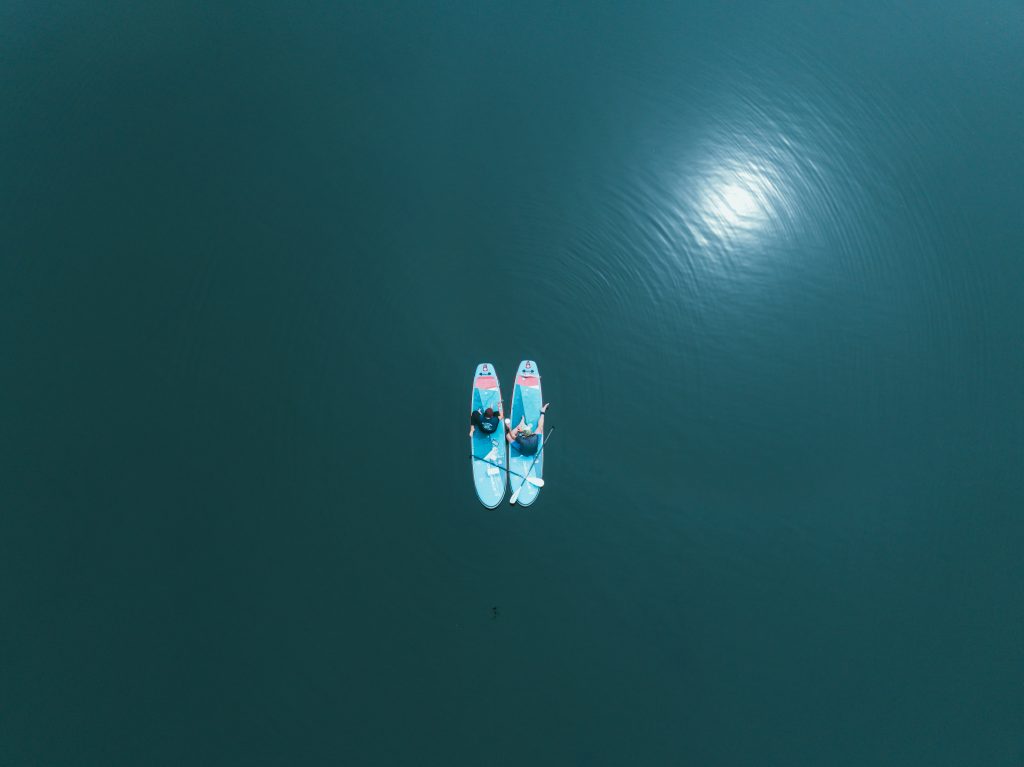
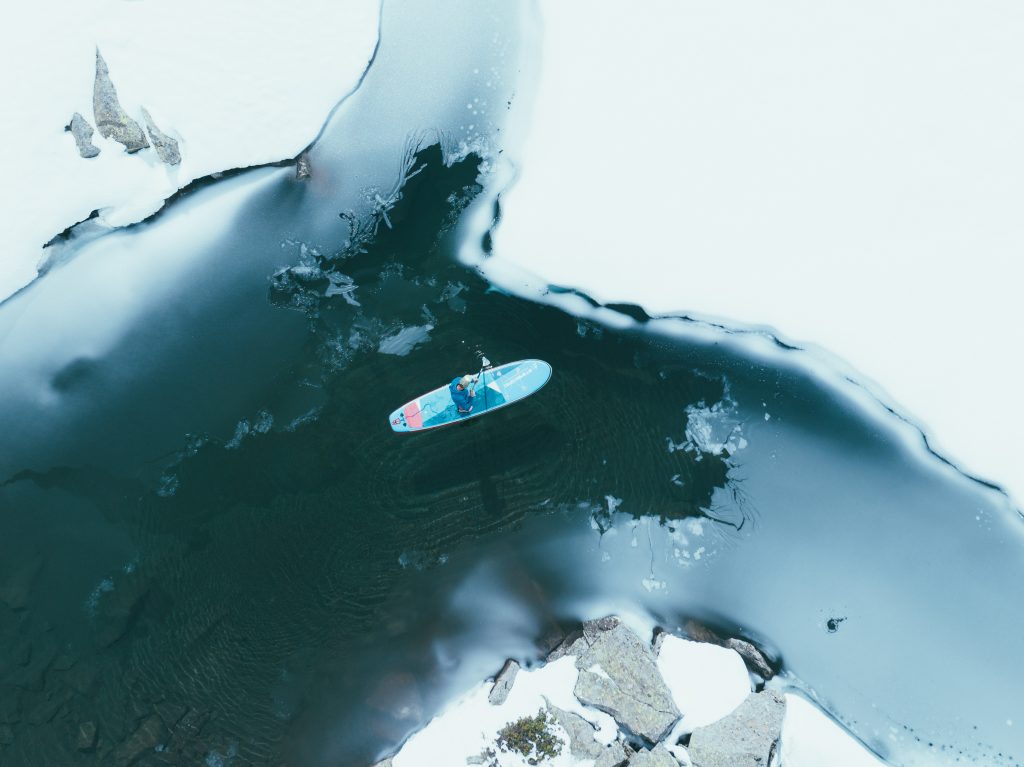
I decided to make the best of this last day. I make peace with a lower lake. We can collect some samples for the research which is good. Almost immediately, we reach Lago di Nambino, feeling like a Sunday stroll. It’s beautiful though, and once on the water, I feel at ease again, like a soothing balm on the wounds created over the past days.
“The weather looks really good today. How far is the next higher lake?” asks Jens, one of our two fantastic cameramen on the trip.
My eyes light up. Could it be? We ask around about the possibilities. According to locals, it snowed yesterday, but it should be reachable now. I decide to go for it, accepting the risk of another failure. After some hiking this trek also reveals more snow than mentioned. Doubt creeps into my mind, and my backpack, weighing over 20 kg, starts to feel heavier. I sink into the snow more frequently. Another trek for nothing? How much longer? Shouldn’t we be seeing the lake by now?
Finally, there’s relief! It’s Lago Nero, not the lake we aimed for but the one just before it at 2300 meters. It’s perfect at this moment! It feels fantastic! A weight is lifted off my shoulders! Literally and figuratively. No one has ever paddleboarded here before! It was all worth it! The drone shows that the higher lake is completely frozen? It seems this it the highest lake we can paddle on at the moment. Unfortunately, we found a plastic bottle even in this remote location. So, this place isn’t plastic-free either.
Chapter 4: Result
Result: The collected samples, consisting of filters, snow, and bottles of water, are analyzed by the team at Bitelab, CMK University Hasselt, for micro and nanoplastics. Seeing plastic in the water already tells me it’s not plastic-free. All this water eventually flows into the oceans, and we also depend on this water. Even for someone living inland, it’s important for our health to protect the oceans. Ultimately, it is our greatest source of existence.
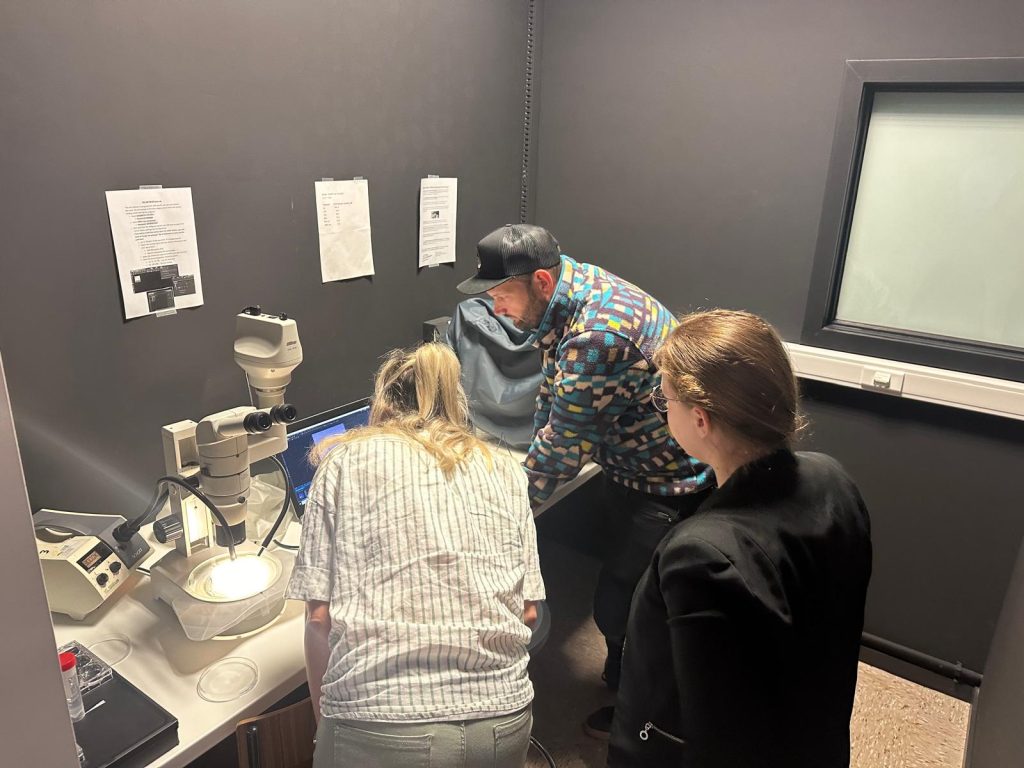
Sample Collection Locations and Coordinates

Location 1: Lago di Place moulin, Bionaz, Valle d’aosta, Italy
– Coordinates: 45.899399, 7.494684
– height: 1840m
– 4 x 1L bottles of water
Location 2: Bionaz, Aosta Valley, Italy
– Coordinates: 45.909077, 7.488675
– Height: 2540m
– 4 x 1L bottles of snow
Location 3a : Lago di Nambino, Pinzolo, Italy
– Coordinates: 46.242264, 10.801462
– Height: 1788m
– Filter
– 8 x 1L bottles trough the filter
Location 3b : Lago di Nambino, Pinzolo, Italy
– Coordinates: 46.242160, 10.798809
– Height: 1788m
– Filter
– 8 x 1L bottles
Location 4: Lago Nero, Pinzolo, Italy
– Coordinates: 46.244269, 10.782538
– height: 2254m
– Filter
– 6 x1L bottles
– White water
More About Wim
Wim Pyl, founder of Mangata adventure was born in a small and also the oldest town in Flemish Belgium. A town far away from the open waters. Nevertheless he has always felt attracted to water. In 2016, during a holiday in Greece, he was very shocked by the large amount of waste along the coast and decided to take action himself. A Sup initiation quickly gave him a good feeling and it looked like the perfect tool to inspire people with his love for adventure, waters and the environment.
Through adventures, in recent years Wim made awareness of the problem that plastic pollution is. There was the 5 days – 240km trip along Belgian canals and rivers while collecting plastic garbage in 2017. A first for Belgium. He also raced as Plastic Monster in the Joinville-le-Pont SUP race in Paris and paddled a 24 hours non-stop journey along rivers and sea in 2018.
